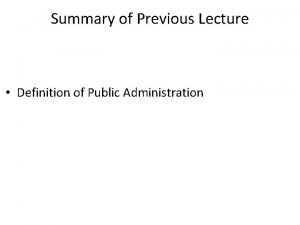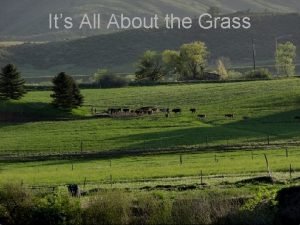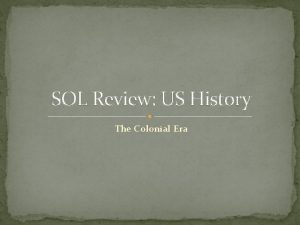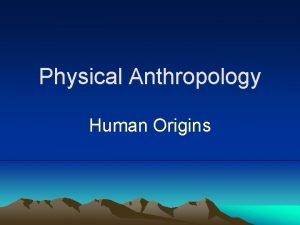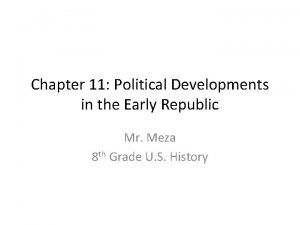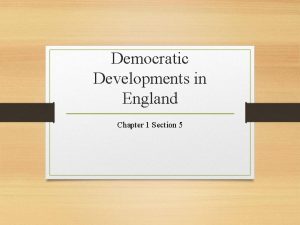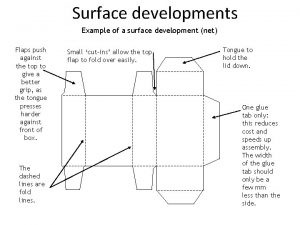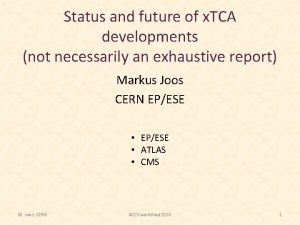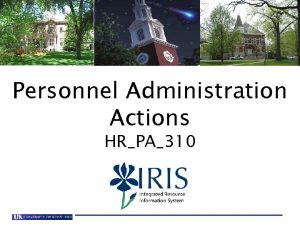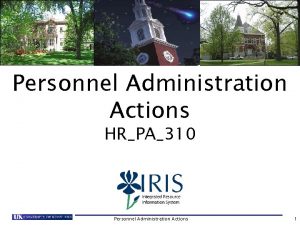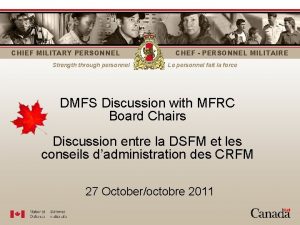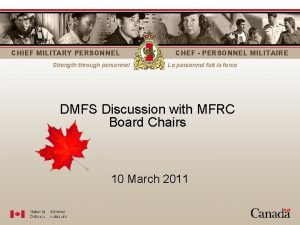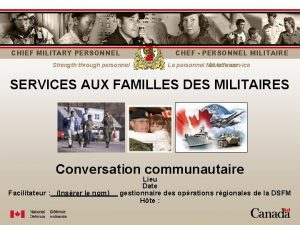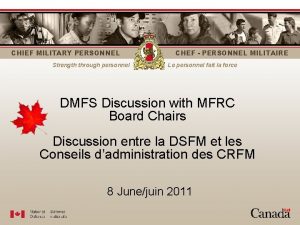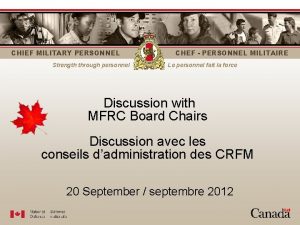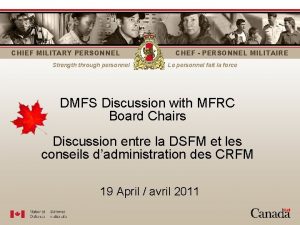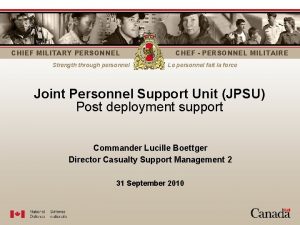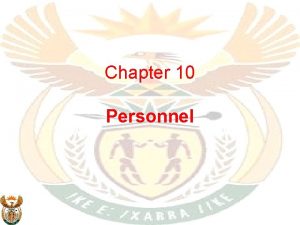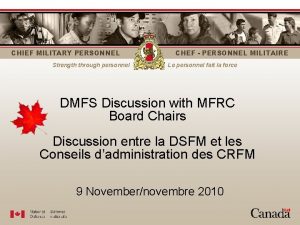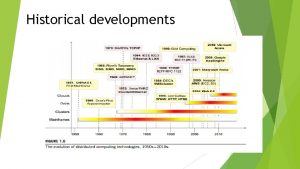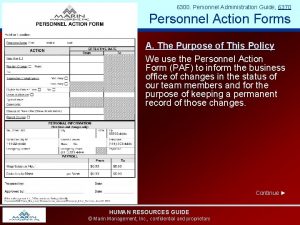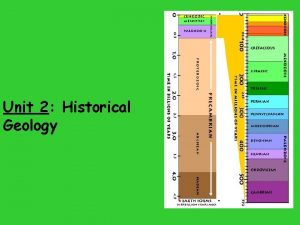Historical Developments in Personnel Administration Industry A Historical


















- Slides: 18

Historical Developments in Personnel Administration Industry A Historical Overview - 1870 -1910 - 1910 -1930 - 1930 to present LIHernandez

Turn of the Century: 1870 -1910 o Social Darwinism n “Survival of the fittest” was believed to pertain to the social as well as the natural world; thus, the weak (the employees) were thought to have lost the struggle for dominance and so were expected to submit to the successful competitors (the managers). LIHernandez 2

Turn of the Century: 1870 -1910 o Social Darwinism n Social darwinism represented “the natural law” and they believed any change in the relative positions of managers and employees should proceed slowly at all. o That employees must wholly conform to the expectations of the social betters LIHernandez 3

Turn of the Century: 1870 -1910 o Two general approaches – n TREATING LABOR AS A COMMODITY o o Employees represented a factor of production to be procured as cheaply as possible ad discarded them when no longer useful. The human factor was at best irrelevant in employment decisions. LIHernandez 4

Turn of the Century: 1870 -1910 n SOCIAL WELFARE AND PATERNALISM o Moralistic interpretation of social darwinism n n “Men employees will be given an evening off each week for courting purposes or two evenings a week if they go regularly to churches” “Any employees who smokes Spanish cigars, uses liquor in any form, gets shaved at a barber shop, or frequents pool or public halls, will give me enough reason to suspect his worth, intentions, integrity and honesty” LIHernandez 5

Turn of the Century: 1870 -1910 o In summary… n n n Employees and managers often justified their dominant organizational positions in terms of scientific and even moral laws; Employees were expected to obey managerial directives to the letter and adapt entirely to the organization’s need; and, Non-managerial employees were considered to be all alike, a rather passive group offering no unique or significant challenges to the organization. LIHernandez 6

Growth of the Personnel Function: 1910 -1930 o Backgrounder n n n Recognition of employees’ uniqueness and importance World War I Increase in trade union activity LIHernandez 7

Growth of the Personnel Function: 1910 -1930 o Recognition of Employees’ Uniqueness and Importance n Psychological reforms (Whiting Williams, 1916) o o o Employees as human beings with unique attributes that will contribute to the growth of the organization Employees had a wide range of human desires and impulses Employees were becoming more complicated because of their increasing intelligence and more subject to mental strain from the workplace (e. g. , boredom, antagonism) LIHernandez 8

Growth of the Personnel Function: 1910 -1930 o Recognition of Employees’ Uniqueness and Importance n Efficiency movement (Frederick Taylor, 1911) o Scientific management n n What out to be done with less production waste and efficient cost of work output Written directions with the kind of work that ought to be done efficiently LIHernandez 9

Growth of the Personnel Function: 1910 -1930 o Recognition of Employees’ Uniqueness and Importance n Efficiency movement (Frederick Taylor, 1911) o “Rule of the thumb” management techniques n n If employees do not perform well, it is the fault of management Observing job behaviors, define efficient movements Careful recruitment according to the duties specified in the task Higher employer profits, higher employees wages LIHernandez 10

Growth of the Personnel Function: 1910 -1930 o World War I n The war affected the development of personnel function into an important organizational activity in several ways – o o Wartime demand for production coupled with the induction of many employees into the Armed Services resulted in in employees receiving more managerial attention and concern Instead of organizational survival, emphasis was given to cooperation among personnel LIHernandez 11

Growth of the Personnel Function: 1910 -1930 o Trade Unionism n n Unions are seen as “preventive medicine” in work -related disputes between the employees and the managers Representative unionism – labor (employees) leaders discuss personnel issues among fellow employees LIHernandez 12

Growth of the Personnel Function: 1910 -1930 o In summary… n n n Personnel activities such as those involving job tasks and performance standards must include interpersonal considerations. Representations among employees (workers) were being encouraged to better the organization. Specific tasks were given based on individual merits and appropriate wages were given. LIHernandez 13

Solidifying Personnel Function: 1930 to present o Four organizational roles n “Firefighter” – Personnel is largely reactive, they wait until the problem (i. e. , absenteeism, work slowdown, or turnover) becomes evident, then act to alleviate it. o o It makes them dependent on unpredictable organizational events, particularly those other managers do not want to handle It diverts them from long-range policy planning and professional development LIHernandez 14

Solidifying Personnel Function: 1930 to present n “Conciliator” – Personnel is a conciliator of opposing values and interest groups in the decision-making process o o Personnel representatives must at least acknowledge the extent of various interest groups and power structures within an organization Personnel representatives must know the “environment” or “ecological” staffing levels and requirements of the organization LIHernandez 15

Solidifying Personnel Function: 1930 to present n “Auditor” and “Controller” – whereby personnel policies and activities are monitored and evaluated to ensure that they are effectively carried out. o o Personnel representatives must study very well employees’ movements in the career system Personnel representatives must recommend strategies for the managers where to place people based on merit and experience LIHernandez 16

Solidifying Personnel Function: 1930 to present n “Innovator” and “Agents of Change” – they analyze the organizational problems and processes, usually those that pertain to the complex network of relationships among employees. o o Personnel representatives must anticipate a wide range of societal events (potential employment legislation, changing workforce trends) that could affect the organization Personnel representatives must provide long range planning and workforce forecasting. Planning involves the application of sound personnel knowledge and techniques to important and dynamic challenges faced by the organization LIHernandez 17

Assignment o In one continuous essay (2 pages at the minimum), kindly describe what is the role of your respective personnel representatives in your offices. Explain if you are satisfied or otherwise of the assumption of that role by your personnel representatives. Submit this essay in the next meeting. LIHernandez 18
 Pattern of development
Pattern of development Occupational definition of public administration
Occupational definition of public administration Historical development of hospitality industry
Historical development of hospitality industry Famous food entrepreneurs
Famous food entrepreneurs Democratic developments in england
Democratic developments in england Huron creek developments reviews
Huron creek developments reviews American grassfed association standards
American grassfed association standards In the colonial era developments such as the new england
In the colonial era developments such as the new england Sahelanthropus tchadensis cultural development brainly
Sahelanthropus tchadensis cultural development brainly Ska developments
Ska developments Political developments in the early republic
Political developments in the early republic How did parliament emerged victorious in medieval england
How did parliament emerged victorious in medieval england What is the pattern of development
What is the pattern of development Target developments
Target developments Chartered developments
Chartered developments Name
Name Surface developments
Surface developments Recent developments in ict
Recent developments in ict Asis atca
Asis atca

